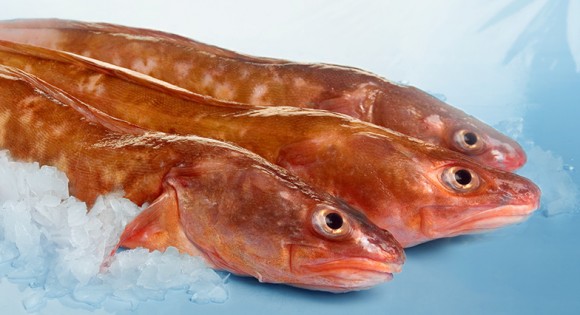Kingklip

Genypterus capensis (Smith, 1847), commonly known as kingklip, is a species of cusk eel occurring along the Southern African coast from Walvis Bay in Namibia to Algoa Bay in South Africa, and is closely related to Genypterus blacodes from New Zealand. The species grows to a maximum length of 180 cm, a weight of 15.0 kg, and is one of the most popular fish items on South African menus. Despite appearances it is not closely related to the eel family of Anguilliformes.
Kingklip occur at depths from 50 – 500 m, but usually in the range 250 – 350 m. They are bottom-dwelling and inhabit rocky localities on the shelf and upper continental slope. Juveniles are more often found in shallow waters. They feed on dragonets, mantis shrimps, hake, squid, and various fish species. Spawning usually takes place from August to October. The species is oviparous, with oval pelagic eggs floating in a gelatinous mass. Their dorsal soft rays number 150, while the anal soft rays number 110. The head and body are normally pink to orange in colour, with dark blotches dorsally.
Andrew Smith, the redoubtable Scots explorer and zoologist, first described the kingklip in 1847 from a specimen caught near the entrance to Table Bay and named it Xiphiurus capensis (‘xiphos’=sword, ‘oura’=tail). His description was published in “Illustrations of the zoology of South Africa”, an account of the natural history objects he collected during his expedition into the interior of South Africa in 1834-36. It was also described by the German naturalist Johann Jakob Kaup in 1858 and named Hoplophycis lalandi.
